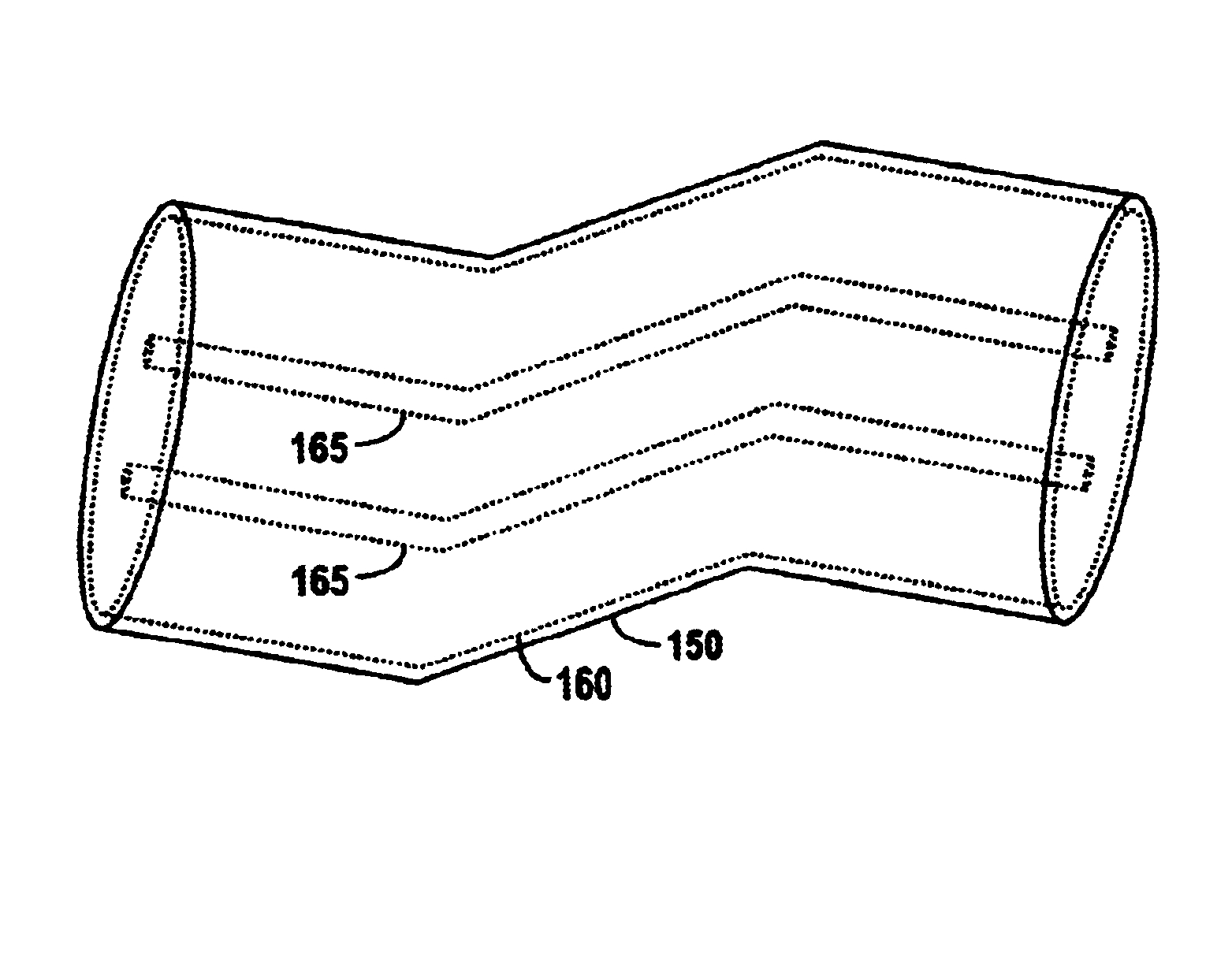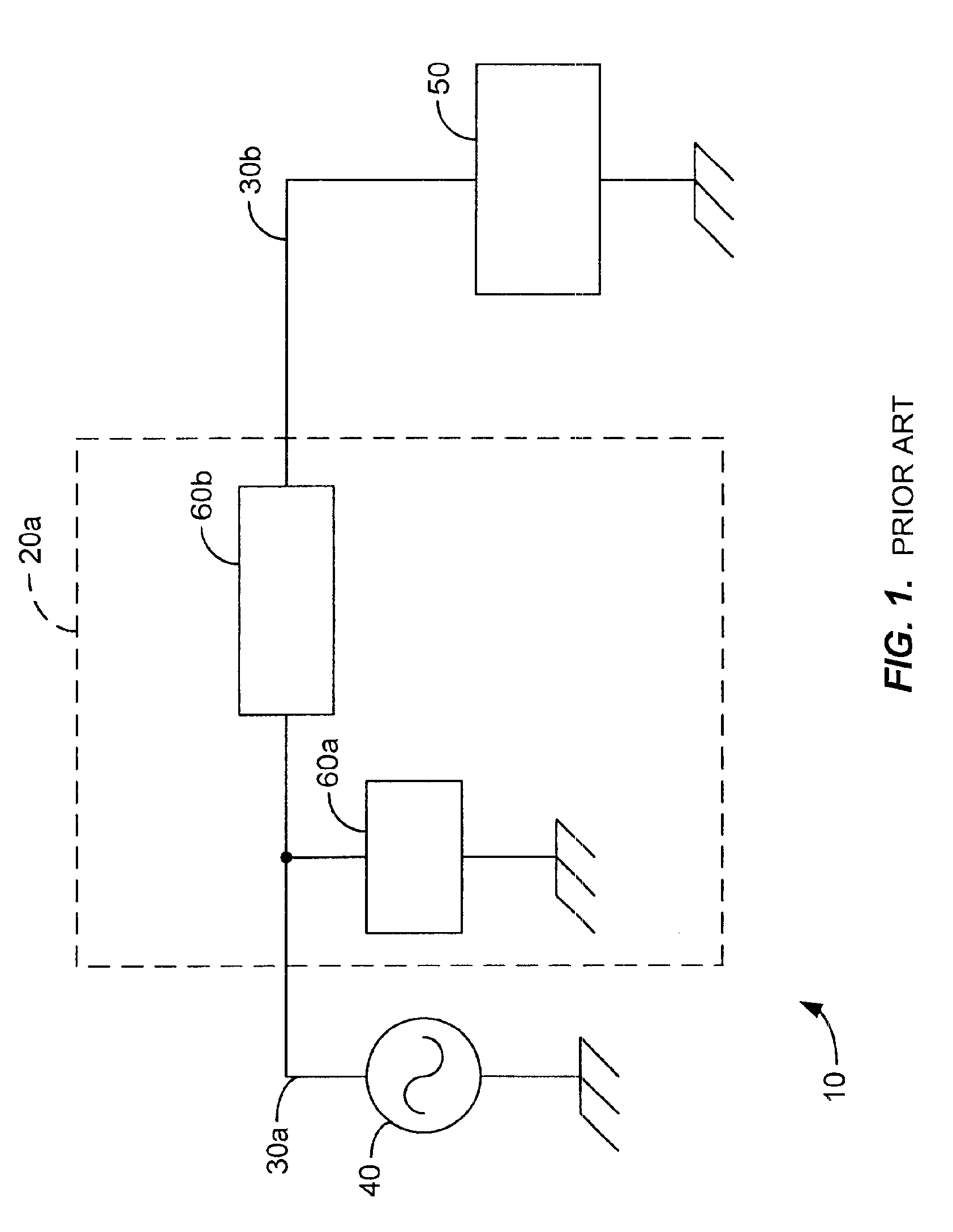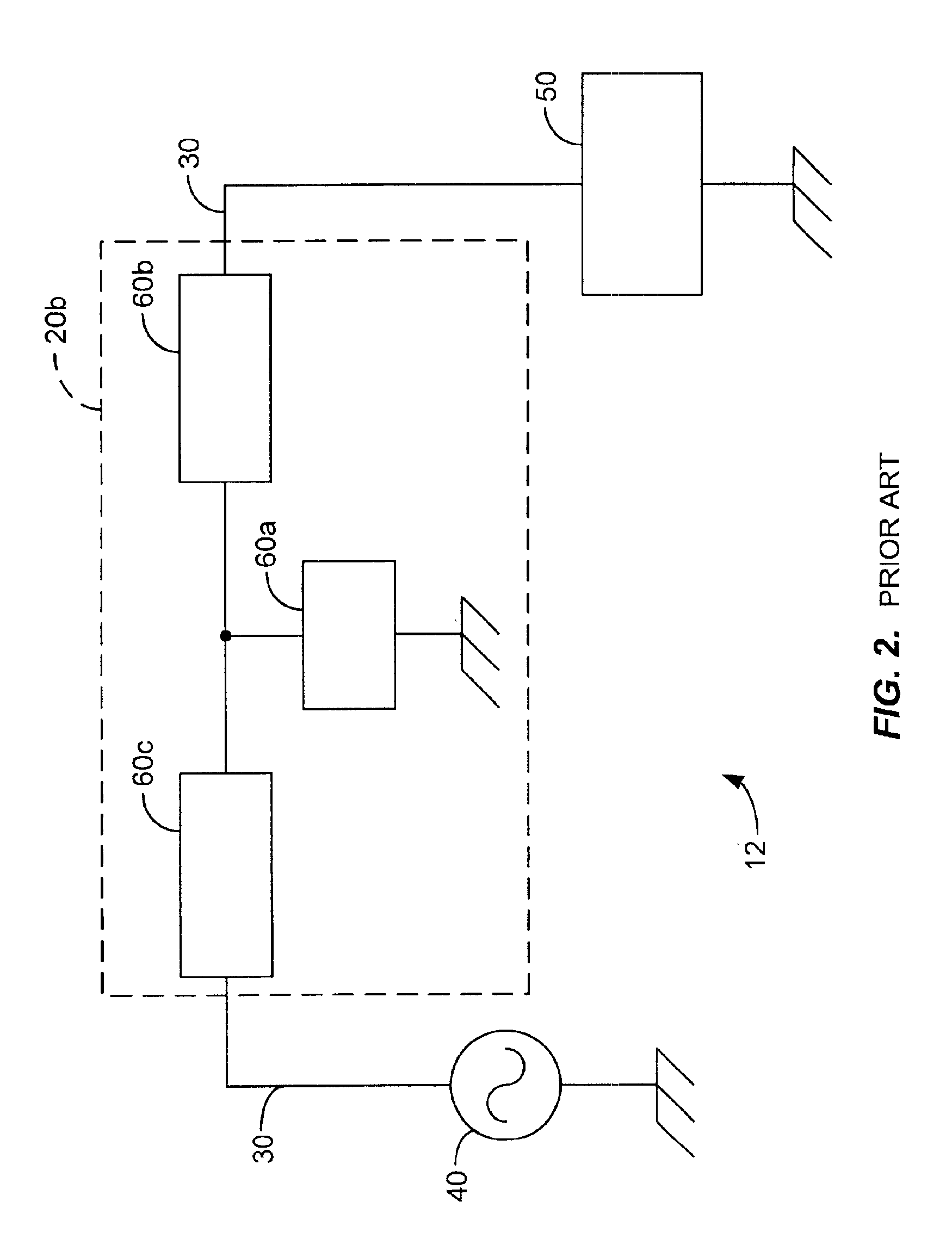Distributed load transmission line matching network
a technology of transmission line and distribution load, which is applied in the field of matching circuits, can solve the problems of less reliable deposition and removal processes, and achieve the effects of improving power delivered to the load, increasing the tuning range, and effectively minimizing the ac energy reflected from the load
- Summary
- Abstract
- Description
- Claims
- Application Information
AI Technical Summary
Benefits of technology
Problems solved by technology
Method used
Image
Examples
Embodiment Construction
[0022]FIG. 5 is a block diagram of an ac energy delivery system 100 according to one embodiment of the present invention. AC energy delivery system 100 includes a matching network 110a that inductively couples an ac power source 120 to a load 130, such as a plasma processing chamber. The ac power source is coupled to a transmission line 140a to deliver ac energy to the transmission line. Transmission line 140a is inductively coupled to a second transmission line 140b. Transmission line 140b is further coupled to the load 130. Transmission line 140b inductively receives ac energy from transmission line 140a and further delivers the ac energy to the load 130. The mutual inductance of two transmission lines is proportional to the length of both of the transmission lines and inversely proportional to the distance between them. To effectively control the mutual inductance of the two transmission lines 140a-b they are placed within close proximity of each other and are enclosed within a s...
PUM
 Login to View More
Login to View More Abstract
Description
Claims
Application Information
 Login to View More
Login to View More - R&D
- Intellectual Property
- Life Sciences
- Materials
- Tech Scout
- Unparalleled Data Quality
- Higher Quality Content
- 60% Fewer Hallucinations
Browse by: Latest US Patents, China's latest patents, Technical Efficacy Thesaurus, Application Domain, Technology Topic, Popular Technical Reports.
© 2025 PatSnap. All rights reserved.Legal|Privacy policy|Modern Slavery Act Transparency Statement|Sitemap|About US| Contact US: help@patsnap.com



